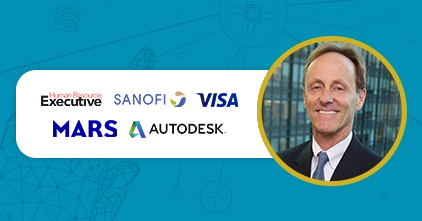The Great Resignation, the rise of remote work, and the spotlight on diversity, equity, and inclusion initiatives created the war for global talent. If you haven’t considered hiring global talent in your talent acquisition strategy, here are some tips to get started!

In today’s interconnected world, talent acquisition has transcended geographical boundaries. The Great Resignation, the rise of remote work, and the spotlight on diversity, equity, and inclusion initiatives created the war for talent. Or more specifically, the war for global talent. Hiring global talent is now a strategic business move in a competitive landscape.
While 2023 opened with a slower hiring trend versus last year, the war for talent persists. HR professionals must now learn to adapt to harness the potential of a diverse talent pool.
Finding and Hiring Global Talent
Tapping into a diverse pool of talent worldwide can level up your organization. After all, it brings unique perspectives, skills, and expertise to the team. With technology bridging distances and time zones, companies can easily access talent beyond their borders.
If you haven’t been hiring global talents, now is the time to do so. Here are some tips to get you started!
Attract: Be present on recruitment platforms
Aiming for global reach means being in the right place. Do your research on the employment websites or platforms that your candidates frequent. Stay visible wherever they are.
Keep in mind that the current recruitment landscape goes both ways. You want to find the right people, and they want to be part of the right organization. It’s about finding the perfect fit for the employer and the candidate. So don’t settle with job ads; show the company’s unique color and culture. Build an active and attractive employer profile that will interest potential candidates.
Once your employer profile is ready, connect with your prospective candidates. Use recruitment channels to reach talent from all over the world.
Assess: Prepare a streamlined evaluation process
Screening global talent may require a different process than local talent. Evaluating experiences and potential cultural fit is equally important as skills and qualifications. That’s why it is necessary to analyze the profile you are looking for.
What are the must-haves and what are nice-to-haves in the list of qualifications? Once you have determined this, you must consider what assessment process you need.
Explore tools and formats that will help you get to know candidates better. For example, you can incorporate video interviews, written assessments, and online evaluations. Aim to have a comprehensive screening that shows strengths and weaknesses.

An assessment tool can be more hardworking by evaluating two or more factors. For example, a language test can simultaneously evaluate skills and cultural fit. Global companies often make use of corporate language to collaborate. So a language assessment means more than proficiency results. It measures the ability to communicate in both professional settings and casual conversations.
Does the candidate have enough language skills to connect with fellow employees? Also, does the candidate have communication skills to do tasks with the team? In such a scenario, language assessment helps determine both skills and cultural fit.
Bottom line: Don’t be afraid to do more than the standard assessment. Make it a goal to test your global candidates accurately. As long as you know what skills you need to evaluate, you’ll find that there are means to do so. You can check out your options before streamlining your process.
Integrate: Prepare relevant onboarding and integration plans
Hiring people is half the battle. Early in the recruitment, consider the support candidates will need upon hiring.
Employing global talent has its advantages, but foremost, the organization has to make everyone feel comfortable with diversity. There must be psychological safety to speak up and share ideas within a diverse team. In breaking cultural barriers, the talent acquisition team plays a significant role to create a climate of open communication and foster a sense of belonging.
The employee experience starts with onboarding — a crucial phase you cannot just wing. When it comes to global talent, prepare a company culture and work environment integration plan. You can also include tools and platforms that facilitate intercultural communication and knowledge-sharing.
Your interviews and tests can give many insights into what candidates need. Make that your starting point. These will aid you in developing a relevant onboarding plan. Additionally, you can research the cultural differences they may encounter.
Develop: Retain global talent with an upskilling program
Retaining global talent is the key to fully harnessing diverse skills and perspectives. In the war for talent, retention should be part of the goals. A possible solution to this is to keep employees engaged through upskilling.
Show commitment to the growth and advancement of your workforce by offering opportunities for continuous learning and professional development.
Designing an upskilling program for the needs and interests of global talent can deliver vital results. First, it enhances their skills. Second, it fosters a sense of loyalty and engagement.
Provide access to online courses, virtual classes, and certification programs. Keep your global talents competitive in the evolving job market. Even better, let them contribute more to the organization’s success. Remember: When the organization invests in its talent, the employees return the investment.

Maximize Global Talent
The war for talent has begun. And the only way you win is by having the best in your organization. Attract, assess, integrate, and develop top talent in a competitive job market. Start implementing strategies for hiring global talent today.



